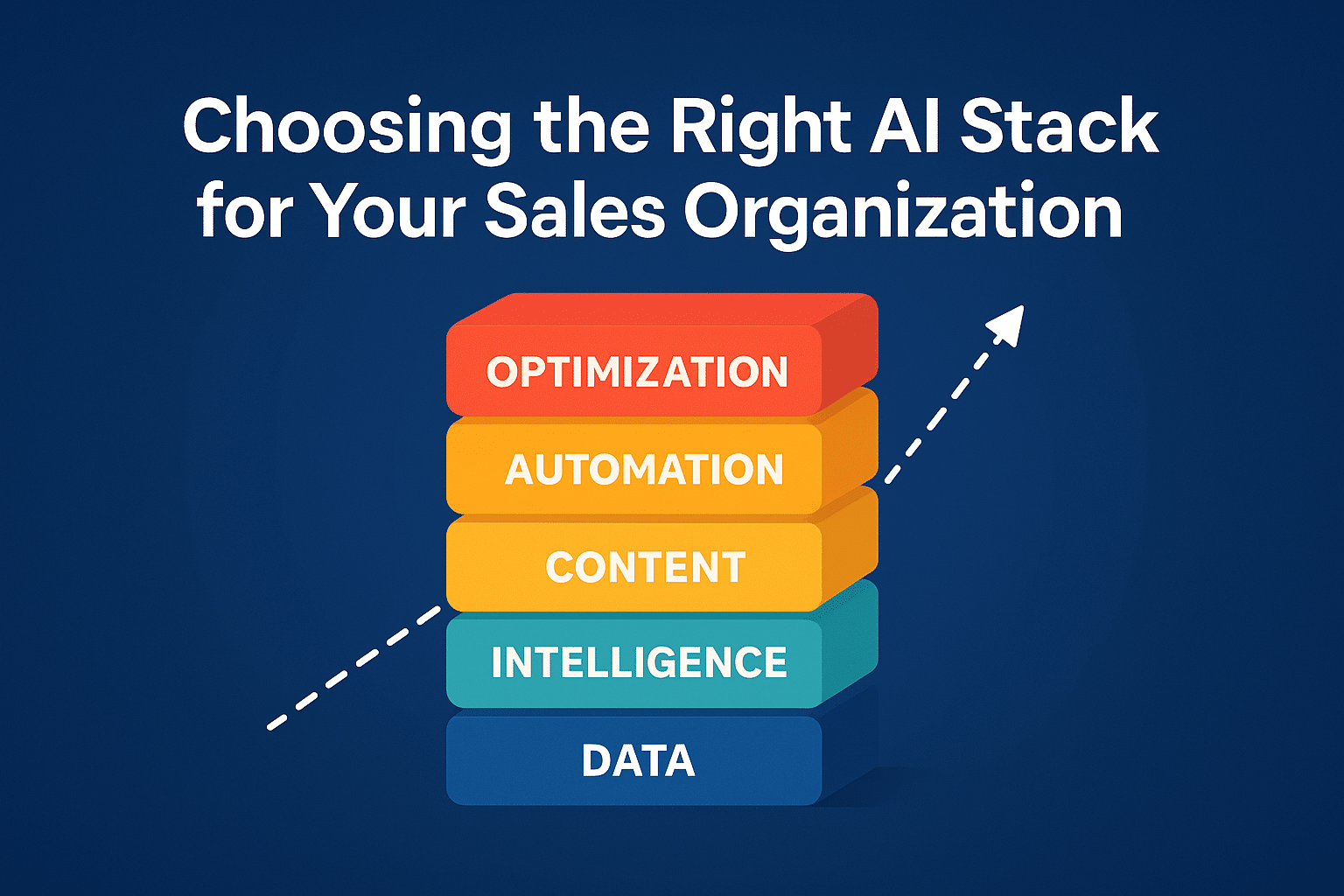Choosing the Right AI Stack for Your Sales Organization
A VP of Sales recently confided in me: “We have six different AI tools, but our reps are still doing manual work. What went wrong?”
This is the AI tool proliferation problem. Sales leaders often collect tools without a strategy, mistaking a pile of features for a cohesive system. It’s like buying a hammer, screwdriver, saw, and drill without realizing you’re actually trying to build a house. An effective AI stack means integration. When tools work together, they amplify each other’s value. When they don’t, they add complexity, confusion, and wasted money.
Why Strategy Beats Random Adoption
Random tool adoption is rampant across sales organizations. Teams chase shiny new software, often ending up with overlapping features, siloed data, and productivity lost to tool-switching. Instead of solving problems, the stack itself becomes the problem.
But when built strategically, the benefits are profound. Integrated systems reduce manual data entry, accelerate response times, and deliver actionable insights for reps. Three well-chosen, well-connected tools can outperform six isolated ones. Integrated stacks also improve adoption rates by providing consistent interfaces and reducing training overhead.
The Five-Layer AI Stack Framework
To avoid the chaos of random adoption, I use a five-layer framework for structuring sales AI tools:
- Data Foundation – Your CRM and data management system, enriched and maintained for accuracy.
- Intelligence & Analytics – AI-driven insights, lead scoring, forecasting, and market intelligence.
- Automation & Workflow – Sequences, task automation, and cross-platform orchestration.
- Content & Communication – AI writing, proposal generation, and customer-facing tools.
- Optimization & Learning – Conversation analysis, performance tracking, and continuous improvement.



